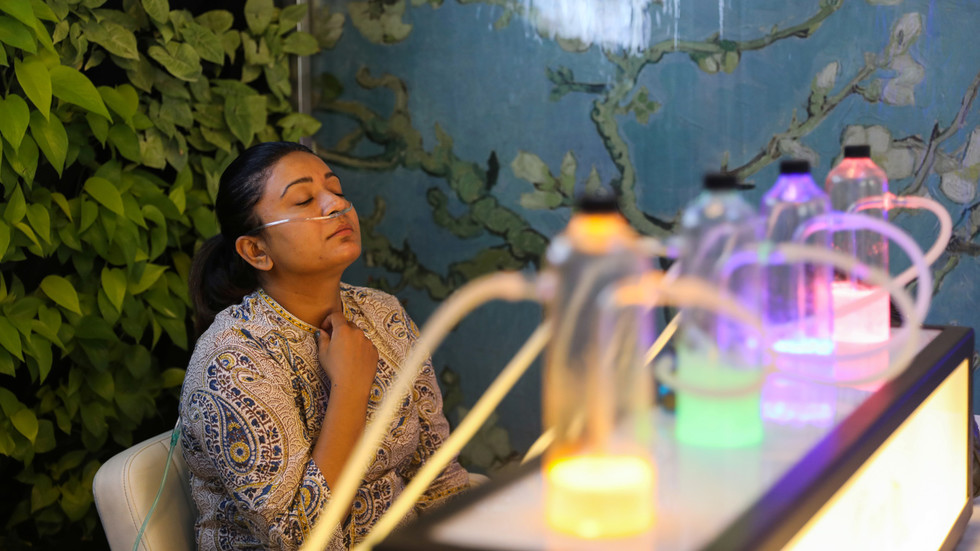
A new fad sweeping India offers customers a breath of fresh air… literally. As pollution in New Delhi hits toxic levels, “oxygen bars” are popping up in the city to help locals breathe easy, but some found the idea off-putting.
New Delhi officials were recently forced to declare a public health emergency over the city’s hazardous air quality after pollution levels soared to around 20 times what the World Health Organization deems safe, halting construction projects, and closing schools across the capital. While the smog-filled air is inescapable for many, those with the cash may find a brief reprieve at their local oxygen bar.
$4 for 15 minutes of FRESH AIR at oxygen bar to escape air pollution in #Indiapic.
One such establishment, dubbed Oxy Pure, is tucked away in the corner of an upscale shopping mall, with bright lights and gadgets glowing through its clear glass storefront. Here, customers can pay between 299 and 499 rupees (around $4 to $7) for a 15-minute oxygen session, with their choice of several fragrances: orange, lavender, cinnamon, eucalyptus, lemongrass or peppermint.
Delhi: An oxygen bar in Saket, ‘Oxy Pure’ is offering pure oxygen to its customers in seven different aromas (lemongrass, orange, cinnamon, spearmint, peppermint, eucalyptus, & lavender), at a time when Air Quality Index (AQI) in the city is in ‘severe’ category.
“Air pollution is going to dangerous levels so people are coming here to breathe pure oxygen,” Oxy Pure owner Aryavir Kumar told the National.
Each winter, air quality suffers in cities around India as winds die down and farmers burn the remnants of crops to make room for the next harvest. This time around, Kumar says New Delhi’s worsening smog has driven a surge of business at his establishment.
“We would get 15-20 people a day [before]. Now we are getting 30-40 customers every day,” he said. “There is a tremendous increase in the numbers of customers in the last two weeks.”
Conjuring images of a pulmonary ward, the bars deliver O2 through a standard cannula device which customers hook up to their nostrils, cranked out of a “concentrator” machine that pulls clean oxygen out of the polluted air. While Kumar is careful to insist the “oxygen therapy” does not cure any diseases, he says the air can rejuvenate “like a spa.”
Oxygen bars are not all that uncommon.
It offers a ‘natural high.’ We’re not used to breathing air which is > 20% oxygen. So, when you take a hit of oxygen at an oxygen bar, you immediately start to saturate your blood with oxygen, which can heighten concentration.
Despite the potential for benefits, many online found the concept downright dystopian, suggesting a future in which only the wealthy can afford to breathe non-toxic air.